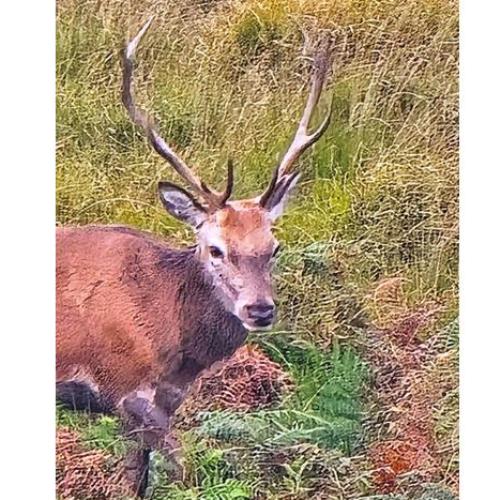History of... Red Deer
Name:
Red Deer
Scientific Name:
Cervus Elaphus
Family:
Cervidae
Conservation Status:
Least Concern
Habitation:
moorland and mountainsides, as well as grasslands near to woodland.
Discovery:
40,000 years ago
The red deer is one of the largest and most widely distributed species of deer. They are found across Europe, parts of Asia, and around the UK, although they mostly live in the Scottish Highlands.
Red deer have adapted to a variety of habitats, from dense forests to open grasslands.
Description:
Their coats are a mix of reddish brown in summer and a more muted, greyish brown in winter.
Red deer are large with males (stags) averaging around 200 to 250 kg (440 to 550 lbs) and females (hinds) being smaller at 100 to 120 kg (220 to 265 lbs). They stand at about 1.2 to 1.5 meters (4 to 5 feet) tall at the shoulder.
Antlers are one of the most spectacular features of red deer, particularly in males. They grow from velvet-covered bone and can span up to a meter wide. Each year they shed and re-grow them. This display not only serves as a tool in battles during mating season but also to attract potential mates.
They communicate through a variety of noises, including roars, grunts, and whistles. They also rely on body language and scent marking
Behaviour and Social Structure:
Red deer are social animals often found in herds, especially females and their young. Males tend to be a bit more solitary, especially outside of the breeding season.
Males can be quite territorial, especially in the breeding season, marking their turf with scent and vocalizations. They’ll engage in traditional sparring matches that are part sport and part display of dominance.
Diet and Feeding Habits:
Their diet consists of grasses, leaves, and bark, but they have a taste for a variety of plants. As winter approaches they start feeding on woody plants and tree bark.
Breeding:
The female has around an eight month gestation. In late May or early June they give birth to a single calf, occasionally twins. The calves are born with spots for camouflage and are kept hidden for safety in their early days.
The calf is weaned at around 10 months old but will stay close to the mother until she has another calf. Older calves stay within the herd, although males may leave at around 3 years old. Red deer tend not to breed until they are around 6 years old. In the wild, red deer typically live for about 10 to 15 years
Threats to Population:
Habitat loss due to urban development and agricultural expansion is a significant concern, along with hunting and poaching.
Photograph: Ian Stephens 


